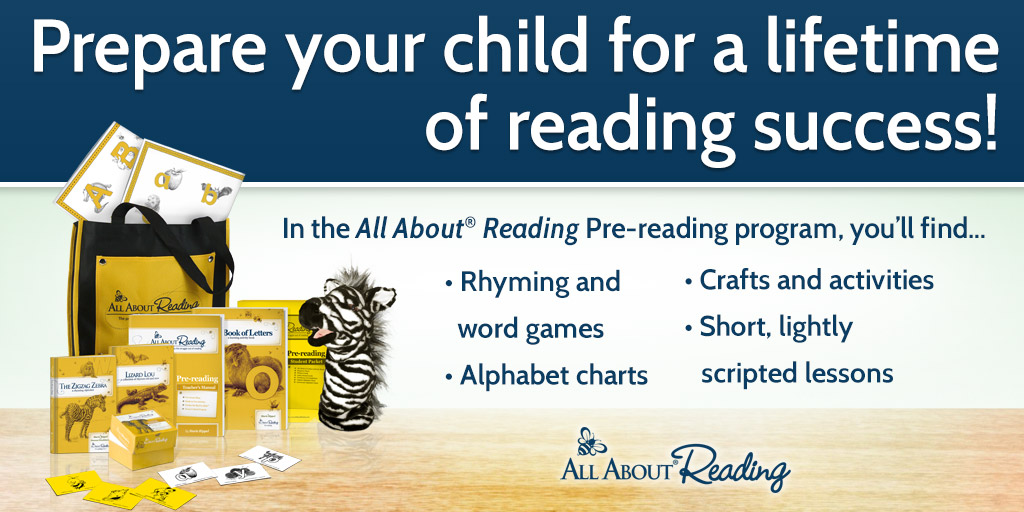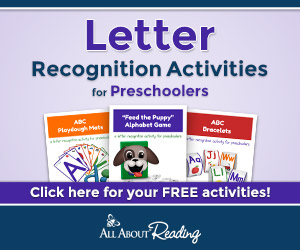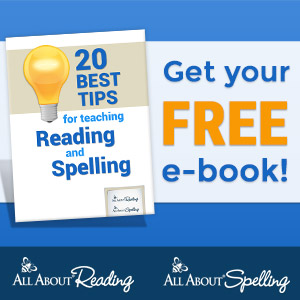061. Talk, Read, and Sing Together Everyday
Talk, Read, and Sing Together Everyday
Tips for homeschooling your youngest!

It’s been proven that talking, reading, and singing with your child every day makes them happier and builds cognitive development. In today’s episode, we’re discussing this topic and sharing game-changing tips for homeschooling your youngest kiddos creating a memorable journey filled with laughter, curiosity, and the joy of exploring the world together
Episode 061:
TWO WAYS TO LISTEN TO THIS EPISODE:
1. Click PLAY Button Above ^^ to listen here.
2. OR Listen on your favorite podcast platform:

Apple – Spotify – Google Play – Amazon – Others
Scroll down the FREEBIE this week:
Nursery Rhyme Posters (pdf)
Brand New to Homeschooling?
GETTING START PAGE >>
Kindergarten Page >>
High School Series >>
Show Notes
Homeschooling preschoolers and very young children is a delightful adventure that transforms learning into joyous exploration. The intimate setting of home provides a comfortable and secure environment and helps foster strong family bonds.
With the growing popularity of homeschooling, a lot of families are wanting to start homeschooling earlier and earlier. Some people even know they want to homeschool before they even get pregnant and they are really eager to get started. But getting started doesn’t mean that you have to sit down at a desk with workbooks or a curriculum. The simple act of engaging in daily conversations, reading sessions, and sing-alongs is not only a lot of fun, but it’s really a fundamental and enriching aspect of their early development.
Talking, reading, and singing together all play a pivotal role in nurturing various aspects of a child’s growth, things like language acquisition, cognitive skills, and emotional well-being. Regular conversations contribute to expanding their vocabulary, and a rich language environment is crucial for development. It strongly influences early language, vocabulary, reading, and math skills, as well as children’s social development. Cuddling up on the couch with a great book and sharing stories fosters a love for reading and also enhances their vocabulary and imagination.
Word Gap
Research shows that some young children are exposed to more language in their homes than other children. This difference in the number of words and back-and-forth conversations to which children are exposed is called the “word gap”. And this word gap is significant! By 3, there is a whopping 30 million word gap between children. That means that the kids at the lower end heard 30 million fewer words. Researchers can already tell a difference between these kids by 18 months so when we get those listeners reaching out, asking what they can do with their very young child, this is definitely the episode for you! There are lots of ways to improve this word gap, many of which we will talk about today. Learn more about What Your Preschooler Should Know
All children, no matter how young, listen to people talk. It is how they learn new words and begin to understand the world around them. Just talking to your kids throughout your day is such a fantastic way to support their development. And singing together, with its rhythmic and melodic elements, not only enhances language skills, but also makes for happier children and strengthens your bond with them.

Here are some creative and educational ideas for encouraging more talking, singing, and reading in your homeschool (9:52):
Conversations during Activities
- Engage in conversations during everyday activities like cooking, cleaning, or playing. This helps build vocabulary and language skills. Talk with your child as you go about your day: making food, riding in the car, getting ready for bed, any time.
- Get down on their level.
- Tune in and listen to what they have to say. If your toddler says “flower,” you can say, “We saw a flower today.”
- You can respond to babbling or even silence. If the child does not speak yet, look at what they are doing or pointing to and use these moments to talk with them.
- Add new vocabulary words to the ones children are already using when talking to them. If he or she says “apple,” you can say, “Do you want an apple? That’s a very healthy food.”
- Restate children’s language using correct grammar.
- Don’t be afraid of using adult words. People love to baby talk to young kids, but if you talk to them in normal language, you’ll be surprised at how much they can articulate.
- Asking stimulating and developmentally appropriate questions can help boost the language environment.
- Ask children about what they are doing.
- Have them connect playing to their own lives. For example, Are they playing with Legos? You can build a little house and put a Lego person inside and ask them what the Lego person is doing inside their house.
- Ask them what they are doing or how something works. And you don’t want to stress out your kid with questions, these should be just light exchanges during play. Some people get really intense in their teacher/student roles as most of us have been programmed on what education should be by the public school system. Some parents ask a question and really want their kid to answer, almost like it’s an exam, but remember this is just engagement and conversation. Keep in mind that you are parent and child first and educating them is just an expansion on this. You’ve been teaching them all their life.
- For children with limited language, giving them a choice can help them respond more easily to questions.
- For example, “did you use colored pencils or markers to draw that picture?” “Would you like to do this or that activity?” Ask open ended, not yes or no, questions that encourage them to keep talking.
- You can gradually increase the complexity of your questions as your child progresses in their development.
- Children can learn big, new, and interesting words through repeated exposures.
You know our answer to everything is reading books! It’s because both of us really value great literature and sharing this with our children. Reading is the cornerstone of all education and higher learning, so it’s essential to start habits when your kids are young. And we are not talking about reading instruction. We’re talking about teaching them how to really enjoy a story. That’s where the love of books begins.
Reading
- Set aside dedicated time for reading books together. Choose a variety of books with colorful pictures and simple language to high quality books with rich vocabulary.
- Discuss the story, characters, and encourage them to ask questions. Have them narrate back to you what a story or book or chapter was about.
- Pick books and let kids pick books about topics they find interesting. Ask questions that relate to the child’s experiences or interests.
- Stop in a story and ask children to make predictions about what you think will happen next?
- Ask them to make up their own stories about those characters.
Visit the Library
- If you’re not already plugged into your local library, get familiar with it. Get your child their own card. Make regular trips to the library to expose your child to a variety of books. Library story time has always been one of our favorite activities.
- Have kids pick out books they are interested in as well as you make choices off your list. Mix all those books onto your library shelf at home.
Music
- Incorporate songs into your daily routine. Singing helps with language development and can make activities more enjoyable. Use simple and repetitive songs to make it easy for them to sing along.
- Have a “good morning” song and a “putting on your shoes” song, etc.
- Play music in the car- there are so many kids artists that we devoured as kids- Lori Berkner, Dan Zanes, Justin Roberts (we even saw some of these in concert). Listen to grown up music, too!
- And I love the Beethoven Wig songs– they are classical music set with lyrics that are pretty catchy and very memorable. I love being at the symphony and one of my kids says I know the words to this song! I just realized the other day that my washing machine plays a Chopin number when it is done. We also choose to explore the works of famous composers and musicians pretty early.
This Composer Book Series was a favorite for both of our families:

Musical Instruments
Consider offering your children the opportunity to learn to play a musical instrument. And this doesn’t have to be expensive. You can choose to do private lessons, but there’s also a lot of online lessons that are very affordable like on OUTSCHOOL or you can do lessons on DVDs. Instruments like the piano, guitar, violin, or even the recorder are good choices for beginners. Have a big basket of musical instruments in your house. You’ll be surprised at how popular these toys are!


Instruments Musical Toys



Singing
Singing can be a wonderful way to bring music into your home. Encourage your children to sing along with their favorite songs or learn new songs. Singing helps develop pitch, rhythm, and language skills. You can incorporate singing into your daily routines, such as singing a “Good Morning” song or singing during chores. Singing can also help teach reading.

Music Classes
We took a couple classes when the kids were really little- Kindermusik and then Music Together. They are super fun mommy and me classes that really help introduce kids to music. I mostly took them for my toddler but my baby liked them so much- we did these for a long time.
Karaoke
Karaoke is not only a favorite activity, it helped my kids learn how to read.. Put a karaoke song on YouTube, give them a microphone and the reading instruction is done for the day!
One of the ways I taught my kids how to read is with Karaoke!

Rhyming Games
- Play rhyming games to enhance phonological awareness. Encourage them to come up with words that rhyme with everyday objects or create silly rhymes together.
- This is a great way to encourage older siblings to play or teach younger siblings. One of my kids’ assignments was to do finger play with their toddler sister when they were little.

- Nursery Rhymes are a great way to encourage speech and vocabulary and memorization work.
Letter and Number Fun
- Introduce letters and numbers through playful activities. Use alphabet and number magnets, sing counting songs, or create simple crafts related to specific letters or numbers.
- Letter of the day or the week is a fun way to do this and great for preschoolers just starting to learn to recognize letters and read.

Nature Talks
- Explore nature together. Discuss the different colors, shapes, and textures you find. This not only encourages conversation but also fosters an appreciation for the world around them.
- Have some field guides and learn how to identify different animals, birds, plants or trees.
- Some of our best talks have been on walks, too. Sometimes it is easier to talk side by side than face to face.

Imaginary Play
- Encourage imaginative play where your preschooler can use their creativity and language skills. This could involve playing house, pretending to be animals, or creating their own stories.
- Create a puppet theater to create fun and interactive storytelling sessions. Encourage your preschooler to participate by making up their own stories or characters.
- You can also do this by Playing Dress Up!

Remember to adapt these activities based on your child’s interests and developmental stage. The key is to make learning enjoyable and foster a positive attitude toward language and literacy. The daily ritual of talking, reading, and singing creates a supportive and stimulating environment that lays a strong foundation for a child’s lifelong learning journey, fostering curiosity, creativity, and a lifelong love for learning. Being able to tailor activities to a child’s unique interests and pace of development is so great and having the freedom and flexibility to choose engaging and interactive lessons turns every day into an opportunity for discovery and growth. From hands-on experiments that spark curiosity to creative arts and crafts projects that unleash imagination, homeschooling fosters a love for learning that goes beyond textbooks.
This Week’s Freebie:

Download your Free Nursery Rhyme Posters















































